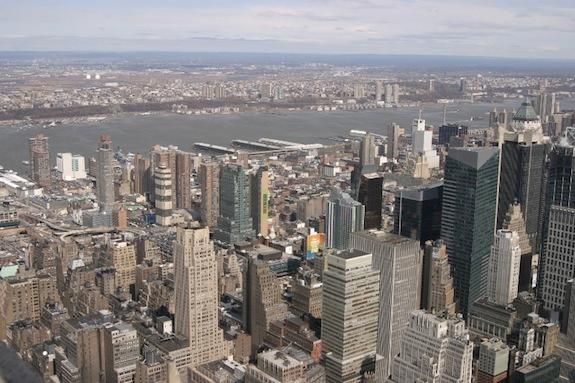How Smart Can a City Get?
Experts think it’s only a matter of time before cities are being run by sensors connected to powerful computers
/https://tf-cmsv2-smithsonianmag-media.s3.amazonaws.com/filer/20111011093007city-skyline.jpg)
The web’s been full of Steve Jobs’ wisdom the past week, but one insight you didn’t see very often was his 2001 prediction that the Segway would be bigger than the personal computer. In fairness, he did hate the way it looked. It was inelegant. It was too traditional. Or, as Jobs put it, “It sucks.”
That said, the Segway got the engineering right and Jobs wasn’t the only one who saw it as an answer to urban congestion. Obviously, it hasn’t worked out that way—Segways are still about as common on city sidewalks as potty-trained pigeons. (Only 30,000 of the two-wheelers were sold in its first seven years on the market.) And that reminds us that no invention, no matter how technologically sound, is a slam dunk in the real world, particularly when that world is as maddeningly complex as a 21st century city.
But what if you could build a city that’s designed to be a laboratory, a place where engineers, government planners and university researchers can test ways of making cities smarter? Not timed-traffic-lights smart, but real digital intelligence, where all the high-tech infrastructure is woven together—you get the power grid talking to the traffic system and then surveillance cameras join the conversation.

That’s what Pegasus Global Holdings has in mind. A few weeks ago the Washington, D.C. tech firm announced that it will build something called the Center for Innovation, Testing and Evaluation in the middle of the New Mexico desert. Sounds like a white-coat wonderland. What it actually will be is more like is a robot ghost town. The place may cover as much as 20 square miles and include enough roads, buildings, homes, water lines and power grids to support 35,000 people. But no one will live there.
Already some are saying Pegasus may end up pulling a Segway. Sure, it’s an ambitious idea that could help urban thinkers fine-tune cities of the future. But without human beings on the premises, some of our more endearing qualities—unpredictability, randomness and irrational behavior—would seemingly be dropped from the equation. What about rampant double-parking? A hacker attack? Mass simultaneous toilet flushes? Flash mobs? A Justin Bieber sighting?
Not to worry, insists Pegagus co-founder Robert Brumley. With enough data and computing power, a city’s complexity can be replicated through algorithms. In fact, he says it has reached the point where human randomness can be built into the mix. For instance, sensors in toilets throughout his faux community can be programmed to mimic human behavior.
Smart moves
No question that keeping cities functioning will be one of the great challenges of the rest of this century. It’s projected that by 2050, 70 percent of the world’s population will live in urban areas. Already, 21 mega-cities have populations of 10 to 20 million.
A lot of experts think the only way to deal with millions of people is to install millions of sensors throughout a city and hook them up to one big operating center. That’s the vision of Living PlanIT, a Portuguese firm which also is planning a model smart city, only it will have people. Nearly everything in that new community, scheduled to be built near Paredes, Portugal by 2015, will be connected to sensors, which will monitor traffic flow, energy consumption, water use, waste processing, even the temperature in individual rooms.
Ideally, its system will work like this: Cameras spot a fire and sensors set off alarms and flashing lights which direct people to safety. At the same time a fire station is alerted and then traffic lights are automatically manipulated so that fire trucks won’t have to slow down.
The trucks, apparently, won’t drive themselves.
Here’s more urban living news:
- Car Talk: A new study found that when cars are able to collect and share information with each other, commute time drops.
- Meter magic: Cities can now install sensors on parking spaces that will allow drivers to use a smartphone app to find open spots.
- Pedal mettle: A bike called the Faraday, which features a 24-volt motor to help with the hills, was selected the best urban utility bike in the Oregon Manifest challenge.
- Smog be gone: Boral Roofing has invented a roof tile that eats smog. Okay, it doesn’t actually eat it. Technically, the tile coating breaks smog down into a substance that washes away in the rain.
- Going underground: Talk about heading in new directions. A Mexican firm has designed an inverted pyramid called an “Earthscraper” that would extend 65 stories underground.
Bonus video: Wrap your head around this one: Cars that fold up, thanks to the whiz kids at the MIT Media Lab.
/https://tf-cmsv2-smithsonianmag-media.s3.amazonaws.com/accounts/headshot/randy-rieland-240.png)
/https://tf-cmsv2-smithsonianmag-media.s3.amazonaws.com/accounts/headshot/randy-rieland-240.png)